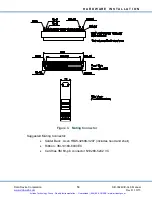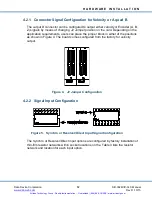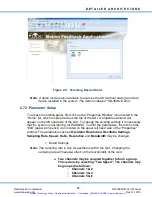
D E T A I L E D A R C H I T E C T U R E
Data Device Corporation
SB-3624XIX-3L0 Manual
www.ddc-web.com
Rev D -10/15
23
5.2.2 Bandwidth
The user can program the device through software for each input channel
independently for Low bandwidth (15/45 Hz) or High bandwidth (100/300 Hz)
depending on order selection. Refer to Table 6 for dynamic characteristics.
Use caution when operating in 10-bit and 12-bit modes. Large input steps can induce
a high acceleration into the R/D converter that may cause the maximum velocity to be
exceeded. If this occurs, the converter can enter a spin-around condition where it may
never settle to an angle because of the low bandwidths at these resolutions.
Table 6. Dynamic Characteristics
TYPE
60 Hz NOMINAL
400 Hz NOMINAL
RESOLUTION (bits)
10
12
14
16
10
12
14
16
BANDWIDTH
(Hz)
Low
*
*
15
*
*
100
High
45
**
**
300
**
**
TRACKING RATE (rps)
32
8
2
.5
320
80
20
5
SCALE FACTOR
(Volts/rps)
.125
.5
2
8
.0125
.05
.2
.8
*Not recommended - Low bandwidths in low resolutions may induce spin around and the part will not settle
**High bandwidths in high resolutions may be used with carrier frequencies above 1.5 kHz
5.2.3 Synthesized Reference
The synthesized reference eliminates errors due to phase shift within the
synchro/resolver sensor of up to 45° between the reference and the signal inputs. This
feature is built into both input channels of this device.
5.2.4 Incremental Encoder Emulation (A Quad B)
The device can also be used for incremental encoder emulation. The following outputs
are readily available A, B, and ZIP (Zero Index Pulse). The timing of the A, B output is
dependent on the rate of change of the synchro/resolver position (rps or degrees per
second) and the encoder resolution latched into the converter (refer to Figure 14). The
calculations for the timing are:
n = resolution of parallel data
t = 1 / ( 2n * Velocity(RPS))
T = 1 / ( Velocity(RPS))
Artisan Technology Group - Quality Instrumentation ... Guaranteed | (888) 88-SOURCE | www.artisantg.com






























